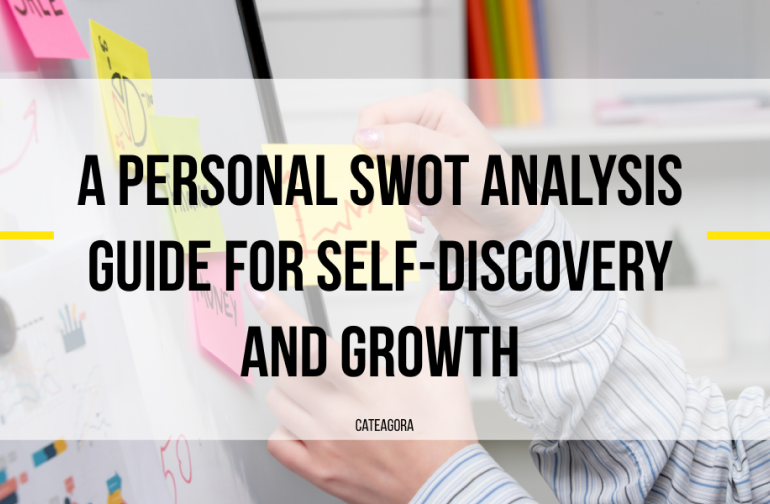Is it beginning on a journey of self-discovery and personal growth? Let’s talk about a handy tool – the Personal SWOT Analysis. In this article, we’ll break down what it is and show you how to use it for your own growth and success. It’s like your roadmap to better understanding yourself and reaching your goals.
The Importance of Personal SWOT Analysis
This self-reflection tool is vital for a few key reasons. First, it helps you know yourself better, highlighting your unique qualities. Then, it aligns your strengths with your goals, making your pursuit of success more focused. Additionally, it makes decision-making easier by considering opportunities and challenges in different situations. In simple terms, Personal SWOT Analysis is like a friendly compass, guiding you towards self-awareness, goal clarity, and smarter decisions on your journey to growth.
How to Conduct a Personal SWOT Analysis
A Personal SWOT Analysis is a valuable tool for individuals to assess their strengths, weaknesses, opportunities, and threats. Here’s a step-by-step guide on how to conduct a Personal SWOT Analysis:
1. Understand the Purpose:
Recognize that a SWOT Analysis is a strategic planning tool to identify and evaluate internal strengths and weaknesses and external opportunities and threats.
2. Identify Your Strengths (S):
- List your skills, talents, and qualities that set you apart.
- Consider your education, work experience, and personal achievements.
- Ask yourself what others appreciate about you.
3. Recognize Your Weaknesses (W):
- Be honest about areas where you can improve.
- Consider skills you lack, experiences you may not have, or personal habits that hinder your progress.
- Reflect on feedback from others.
4. Explore Opportunities (O):
- Identify external factors that could positively impact your personal or professional life.
- Consider trends, networking opportunities, or emerging technologies.
- Think about ways to capitalize on your strengths.
5. Acknowledge Threats (T):
- Identify external factors that could pose challenges or obstacles.
- Consider changes in the industry, economic factors, or potential competition.
- Be aware of your weaknesses that may make you vulnerable.
6. Create a SWOT Matrix:
- Divide a sheet of paper into four quadrants.
- Label the top two quadrants as Strengths and Weaknesses and the bottom two as Opportunities and Threats.
- Populate each quadrant with the relevant points from your analysis.
7. Analyze Relationships:
- Consider how your strengths can help overcome weaknesses.
- Explore how opportunities align with your strengths.
- Think about ways to mitigate threats by leveraging your strengths.
8. Set Objectives:
- Use your analysis to establish personal and professional goals.
- Capitalize on strengths, work on weaknesses, exploit opportunities, and prepare for threats.
9. Develop an Action Plan:
- Create a plan of action based on your SWOT Analysis.
- Determine the steps needed to achieve your goals.
- Establish a timeline for implementing your plan.
10. Regularly Review and Update:
A SWOT Analysis is not a one-time exercise. Regularly revisit and update it as circumstances change. Adjust your goals and action plans accordingly.
SWOT Analysis in Career Planning
Career decisions are critical, and SWOT analysis can be a guiding light in this process. Align your strengths and passions with potential career paths for a fulfilling professional journey. SWOT analysis helps in seamless transitions by identifying transferable skills and potential challenges.
Embracing Growth Through Personal SWOT Analysis
Personal SWOT Analysis is a dynamic tool for self-discovery and growth. Embrace the process, leverage your strengths, and confidently navigate challenges through the abovementioned methods and techniques.
Remember, the key to a successful SWOT Analysis is honesty and self-reflection. By understanding your internal and external factors, you can make informed decisions and take actions that align with your personal and professional aspirations.
Learn the art of communication. Discover the key questions to ask your designer to make the best decision for your home. Explore our blog on “8 Essential Questions to Ask Interior Designers for Your Home.”







